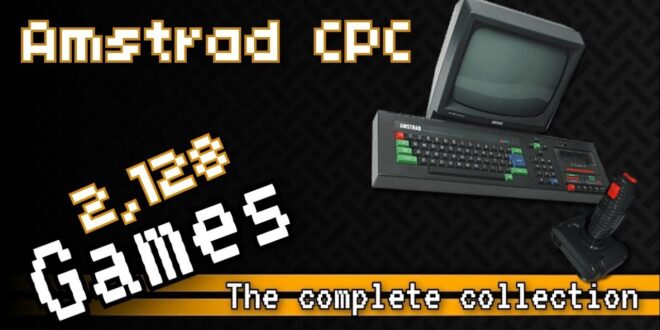Enjoy our comprehensive retrospective as we showcase each and every one of the classic games developed for the Amstrad CPC in this captivating video journey.
Amstrad CPC: A Look Back at a Versatile Computer System
The Amstrad CPC, which stands for Color Personal Computer, is a series of 8-bit home computers introduced in the mid-1980s by British company Amstrad. Aimed at the European market, the CPC sought to compete with other home computers like the Commodore 64 and the ZX Spectrum, offering a range of capabilities at an affordable price. Here, we dive into the specifications, history, and provide a system review of this notable piece of computing history.
Specifications:
– CPU: Zilog Z80A operating at 4 MHz
– RAM: Models with 64 KB or 128 KB, depending on the model
– Video Output: Amstrad’s own gate-array powered graphics with support for up to 27 colors from a palette of 32
– Resolution: Modes ranging from 160×200 pixels in 16 colors to 640×200 in 2 colors
– Sound: General Instrument AY-3-8912 sound chip, providing three channels of sound
– Storage: Built-in cassette tape deck or 3-inch floppy disk drive in later models
– Input/Output: Integrated keyboard, joystick ports, printer port, and expansion port for peripherals
History:
Launched initially in 1984, the Amstrad CPC series was designed to be more user-friendly and accessible than its competitors. It came bundled with a monitor (which also powered the computer) and a built-in cassette deck for loading software, a unique selling point at the time. The CPC series also featured a range of models, such as the CPC464, CPC664, and CPC6128, with varying amounts of memory and storage options.
Amstrad’s founder, Alan Sugar, aimed to deliver a complete package to consumers, making it easier for families to bring a computer into their home without the need for complex setup or additional purchases. This strategy proved successful, and the CPC range became a popular choice for both gaming and productivity tasks.
System Review:
Design and Build: The CPC’s all-in-one design was both practical and aesthetically pleasing, with a compact build that fit well in a home environment. The built-in tape deck in the CPC464 and the floppy drive in the CPC6128 were significant conveniences, though the 3-inch disks were less standard compared to the 3.5-inch and 5.25-inch disks used elsewhere.
Game Library* While perhaps not as extensive as the Commodore 64’s, the CPC’s library boasted some memorable titles, including ports of popular arcade games and original games like “Sorcery” and “Spindizzy.” The quality of games was generally high, and many took advantage of the system’s superior color capabilities.
Graphics and Sound: The CPC’s graphics were competitive for the time, with a color palette that allowed for vibrant games and detailed high-resolution modes suitable for business applications. The sound chip, shared with other systems like the MSX and ZX Spectrum 128, provided rich audio experiences for games and music composition.
Keyboard and Input: The CPC’s keyboard was a step up from the rubber keys found on the ZX Spectrum, offering a more tactile and responsive typing experience. The inclusion of a joystick port allowed for arcade-style controls in gaming.
Cultural Impact: The Amstrad CPC helped normalize the idea of a computer in every home, contributing to computer literacy in Europe. It was particularly influential in the UK and France, where it was widely adopted for both educational and entertainment purposes.
Legacy: Although the CPC series was eventually overshadowed by the 16-bit computer era and the rise of the PC-compatible market, the CPC played a pivotal role in the 8-bit computing era. It left behind a legacy of accessibility and versatility, embodying the spirit of 1980s computer innovation.
Conclusion:
The Amstrad CPC is a testament to the era of 8-bit computing, offering a blend of affordability, ease of use, and robust capabilities. While it may not have enjoyed the same longevity as some of its contemporaries, its impact on the computer industry and its contribution to home computing cannot be understated. With a solid library of games and a user-friendly design, the CPC remains a cherished system among retro computing enthusiasts.
 Retro-Replay.com Retro gaming reviews, news, emulation, geek stuff and more!
Retro-Replay.com Retro gaming reviews, news, emulation, geek stuff and more!




